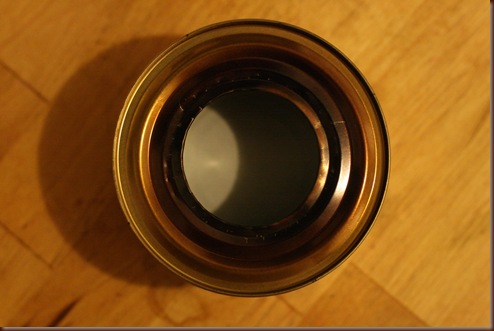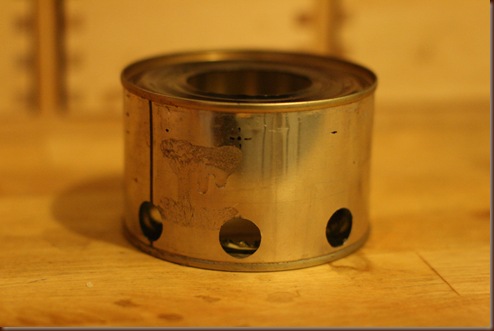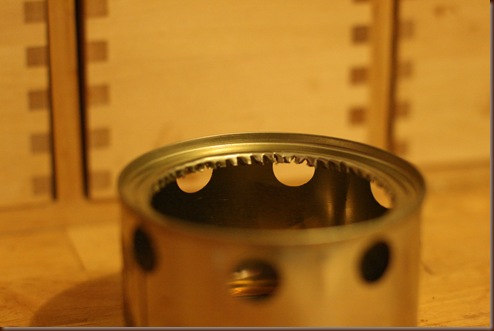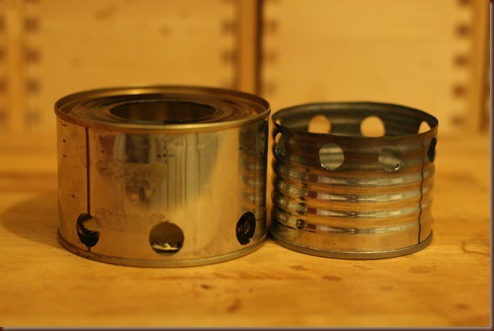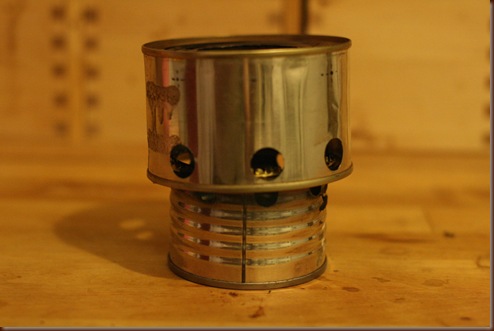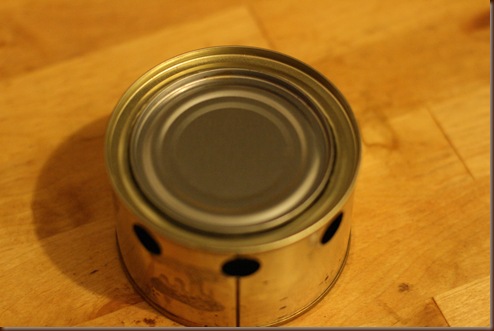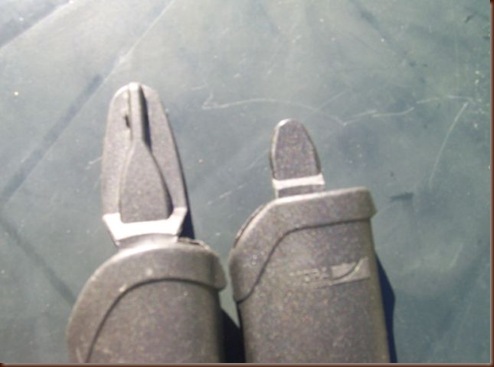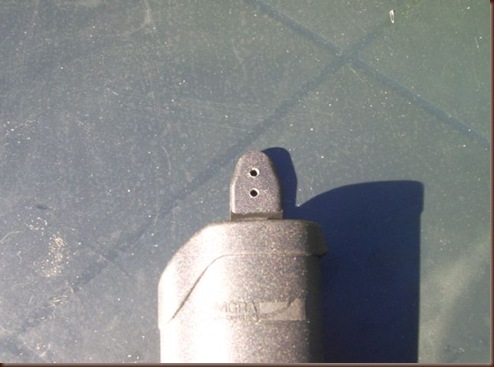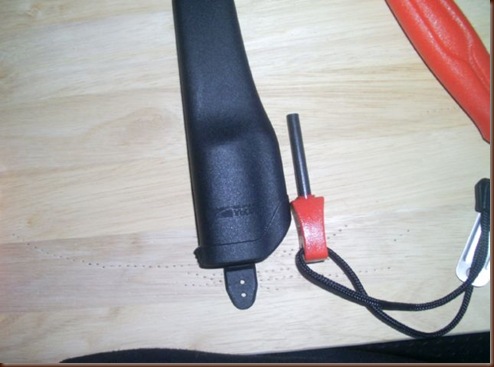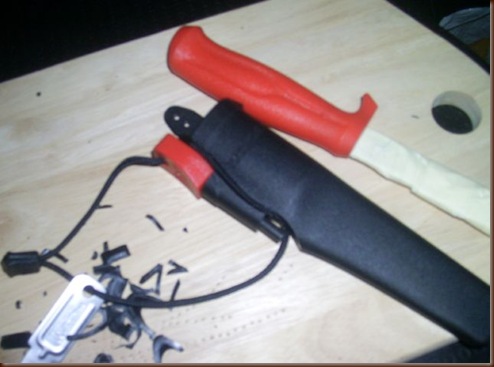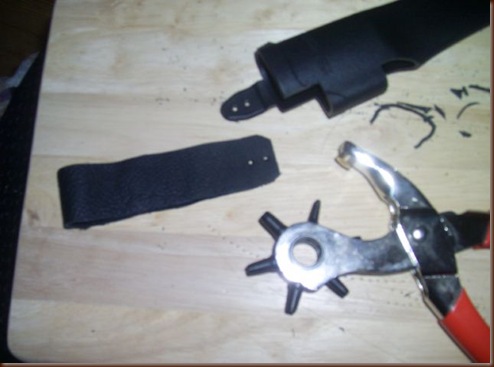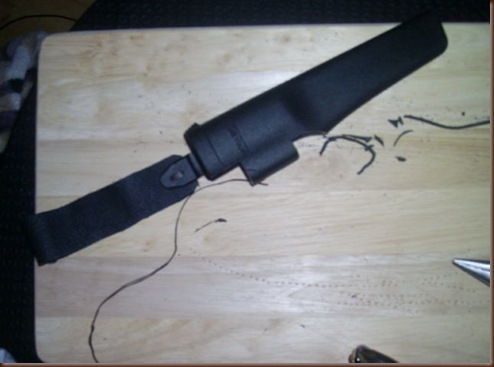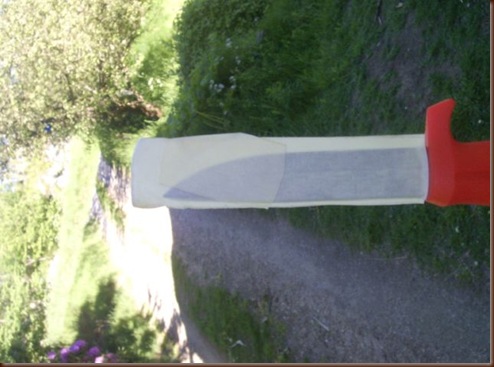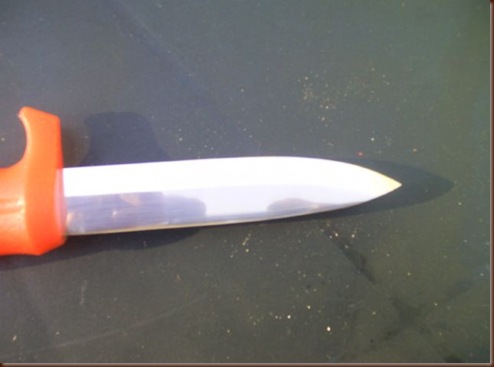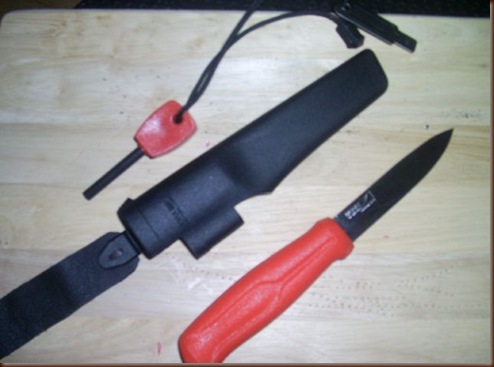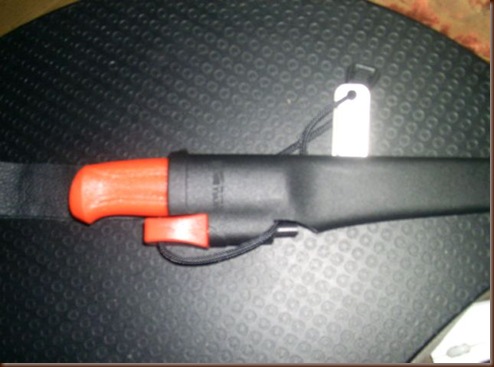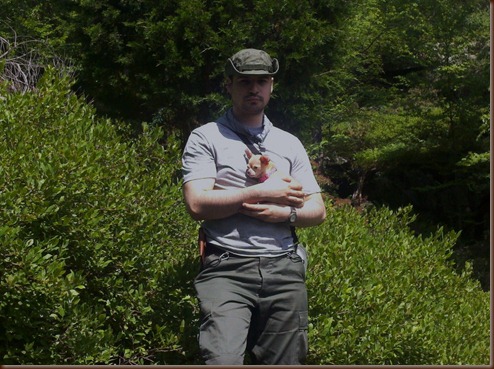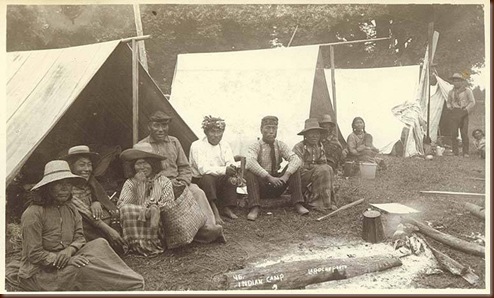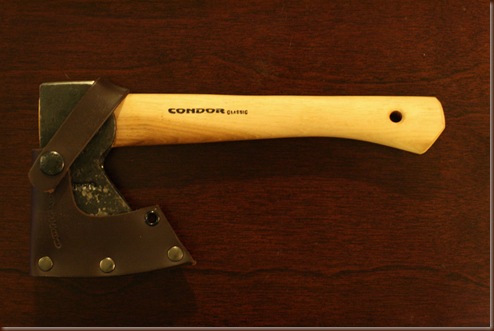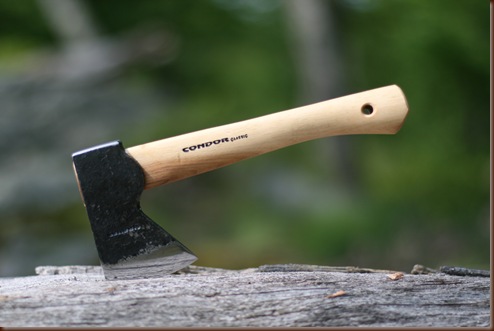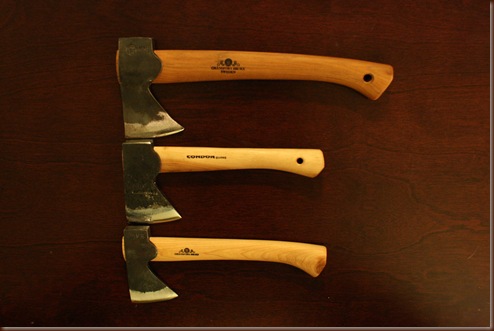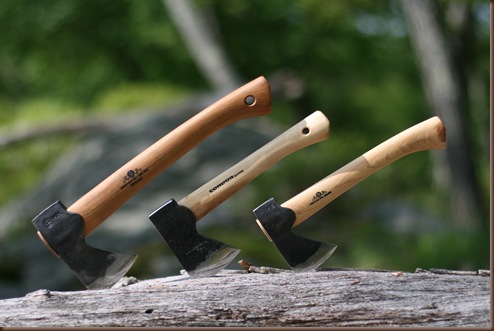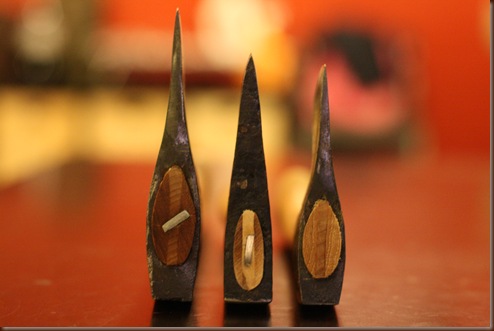I want to start of by saying that my main use for this kit has been to make axe sheaths, and as such it has been completely satisfactory. You can certainly make other items with it, but it is not suited for all projects.
You will also note that I use Tandy Leather Factory for my price points and links. That is not because I think their products are somehow superior, but because it is a good place to get all you tools and equipment online.
The kit is comprised of a piece of leather, a bottle of leather glue, a set of snaps, a set of rivets, and a setter kit.
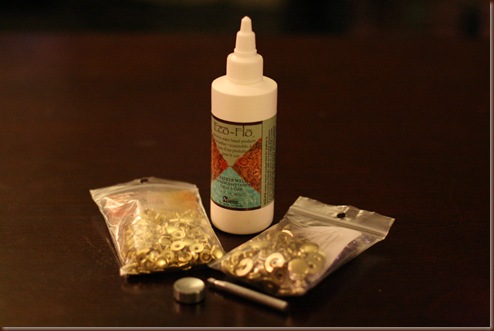
For the leather, I usually get the cheapest tooling leather they have for sale at the time. I prefer a single shoulder cut, and I like mine to be about 5 oz in terms of thickness. That however gives a fairly thin sheath. I think most people would prefer 7 oz or so thickness for their sheaths. You should be able to get a whole shoulder cut for about $20.00. That will give you a good number of sheaths. For the type of leather I am talking about, you can look here. Keep in mind that some prices are listed for the whole cut, while others are per square foot.
The next item is the leather glue. You don’t necessarily need it, and can certainly get away without it, but I like to use it. A bottle will cost about $8.00 and will last a long time. You can see the one that I use here. I use it because it is cheap.
The thing that will actually hold the sheath (or any other project) together in this kit are the rivets. I like to get the extra small ones, and they cost about $4.00 for a pack of 100. You can see an example of them here.
Each rivet set is comprised of two parts. You will have to perforate the leather, and fit the parts, one on each side.
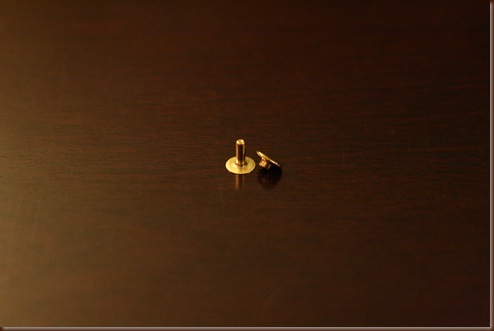
The snaps are also a very important part for an axe sheath. A great way to buy them is in a kit, which comes with its own setter. You can see the kit here. 20 snaps and the setter will cost you $10.00.
The snaps have four parts, two for each piece of leather.
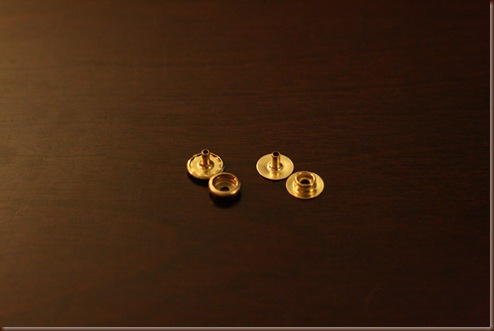
The setter is just a small anvil and dye with which you strike the rivet or snaps. I find that the setter that comes with the above kit works well on the rivets I listed above as well as on the snaps.
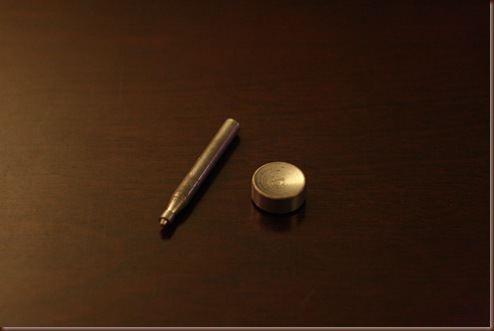
The way to use it is to first make a hole in the leather, using either a drill or a hole punch or awl, and thread the rivet through it, making sure that the two parts connect, one on each side of the pieces of leather. Then place the rounded part of the rivet on the anvil. Place the dye on the other end of the rivet, and hit it with a hammer. The metal is soft, so the portions of the rivet that are inserted into each other will deform, creating a connection. Make sure not to hit too hard, because it is possible to drive the river through the leather completely. The same process works for the snaps as well.
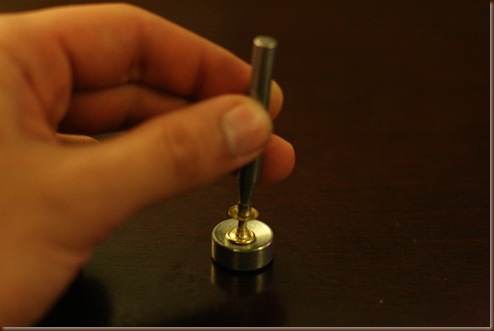
Here you can see a sheath that I have made using this kit. I cut the leather with a pair of scissors, and the holes were made with a drill. For those wondering, the sheath is made of a folded piece of leather, which forms the sides, with a strip of leather inserted between them at the front and, being held by the rivets and glue. The strap is held by a rivet on the back side and a snap on the front side.
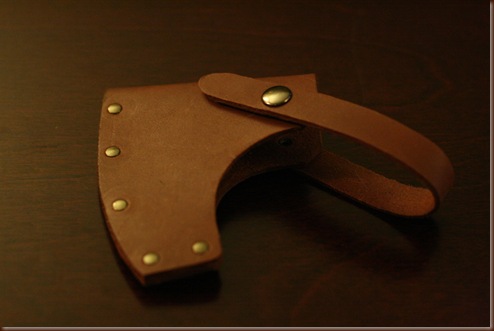
The total cost of the items listed above it $42.00, but that will give you a whole lot of leather sheaths. The thing you will run out of first is probably the leather, but you should be able to get 10 sheaths out of the cut I talked about above.
Next week, I will post the items needed for a more advanced kit, which will allow you to make a greater scope of projects, but these are items that in my opinion belong in every leather working kit.


